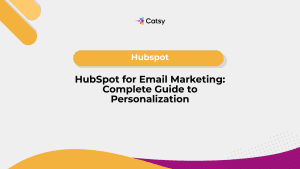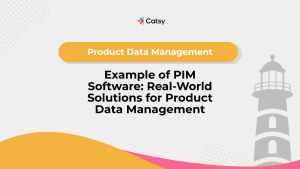Why Static Product Data Sheets Are Holding You Back
Product data sheets have been a crucial part of B2B and B2C sales for a long time, but the way we manage and share them nowadays is evolving fast. Although PDFs and spreadsheets can be crucial if you work with certain distributors, new product data management systems are here to make the whole process more user-friendly. We’re living in a digital-first world now, where people shop online with just a few clicks.

What Are Product Data Sheets Anyway?
Okay, so picture this: a product data sheet (PDS) is basically a super detailed info sheet. Usually a PDF. It tells you everything about a product, size, weight, materials, compliance stuff, and maybe a diagram or two. You’d find these floating around in sales emails, distributor kits, or tucked into a product box.
They were designed for a different kind of buying process, less instant, more manual. Sales teams, buyers, and even customers used them to make decisions. Today’s buyers expect something faster, more interactive, and easier to navigate. They were made for print or email, not for the fast-moving, TikTok-scrolling, Amazon-shopping world we live in now.
In this Article
Why the Old Way Doesn’t Cut It Anymore?
Many companies still rely on PDFs to share product info, which can work in some cases, but it often takes more time and leaves more room for error.
Here’s the problem:
- They get outdated fast- The real challenge with traditional product data sheets isn’t the format, it’s keeping them accurate and consistent as product info changes. Product information evolve quickly and it is important to stay up to date. Without a streamlined way to update and share those changes, even well-crafted PDFs can become outdated fast. When you think that it is happening to every product you sell, you quickly realise that you got a mess on your hands. Outdated info = frustrated teams and confused customers.
- Different teams use different versions – Without a centralized system for updates, it’s easy for different teams to end up using different versions of the same product data sheet. Marketing might be referencing a PDF from three months ago, while sales is sending out last year’s version to clients. That kind of inconsistency leads to mixed messages, incorrect specs, and some seriously awkward phone calls. Not ideal when you’re trying to build trust.
- Search engines can’t read PDFs well- PDFs serve an important role in managing product information. However, it is crucial for digital discoverability to enhance product content with web-friendly formats. They ensure that your information shows up where customers are searching. PDFs are hard for search engines to crawl and index properly, unlike web pages. Just because your content isn’t optimized you are missing out on traffic and potential customers.
- They’re not engaging- While product data sheets are great for technical specs, today’s buyers also expect content that’s more visual, interactive, and tailored to their digital experience. Today’s customers want interaction, video, swipes, and scrolls.
- Tracking updates – Without a centralized system to manage updates, it’s hard to know who’s working from the latest version of a product sheet. It is out of your control once that PDF is sent out. There’s almost no easy way to track updates, see who’s using what, or ensure everyone’s on the same page. That is inefficient and risky for any business that want to keep their product data in control.
So what happens? Misinformation, missed sales, and frustrated teams. Not great.
What’s Everyone Using Now?
Say hello to digital product content, the cooler, smarter, way.
Instead of sending your customers and teams a flat PDF, you’re giving them dynamic, interactive content that actually works in today’s digital buyer world. We’re talking about content that not only looks better but does more. Here’s what that looks like:
- Stunning product photos and demo videos that showcase your product from every angle, in action, with real lighting, real people, and real-world use cases. It’s not just pretty, it’s persuasive.
- Descriptions that adapt based on where they’re being seen. Whether your customer is browsing your website, scrolling on Amazon, or clicking through a Facebook ad, they’ll see content tailored to that platform, automatically.
- 3D product views you can zoom, rotate, and explore, like picking the item up and turning it over in your hands. Perfect for technical products, furniture, or anything where “just a photo” doesn’t cut it.
- Live pricing and inventory updates so you never have to worry about showing the wrong price or promising stock that doesn’t exist. Everything syncs from your source of truth, PIM, ERP, or whatever you’re using.
- Comparison tools and filters that help shoppers find the perfect product faster. Instead of making them need to scroll through PDFs, they can click, compare, and choose what they need without spending a lot of time.
That sounds efficient, right? The thing about digital product content is that it looks better but is also smarter and more flexible way to present your products. It is built for the way people shop now.
Make Catsy DAM and PIM Software an Extension of Your Team
Book a Free DemoWhat is Dynamic Product Data
Okay, so what does “dynamic” actually mean, and why should you care?
In simple terms, dynamic product content is alive. Dynamic content pulls real-time data from a central source, instead of emailing someone a PDF. That source is usually a PIM system. The content is always accurate no matter where it is showing. Whether it’s your website, an Amazon listing, a mobile app, or a printed spec sheet, it shows consistent, and up-to-date information.
Here’s why it can help you improve your product data management:
- It updates itself. Change a price? Fix a product description? Add new specs? Boom, it’s reflected everywhere instantly. No manual edits. No version control headaches.
- It fits wherever you need it to go. Selling B2B? It can adapt the messaging and specs for distributors. Direct-to-consumer? It can switch to lifestyle visuals and simpler language. Marketplaces, mobile apps, sales portals, it fits all of them perfectly.
- It speaks multiple languages. Going global? Dynamic content can automatically translate and localize your product info for international markets. So you’re not just reaching more people, you’re speaking their language.
- You can create custom product sheets in seconds. Need a one-off product catalog for a client meeting? A localized spec sheet for a distributor in Germany? Dynamic systems let you generate polished, accurate documents on demand, without chasing down design teams or old files.
The best part? No more second-guessing if you’ve got the latest version. No more “Wait, is this the right file?” panic. With dynamic content, all you need to do is click and you can immediately view what you need. Managing product data sheet this way provides more accurate, fast, and future-proof process.
What Smart Ecommerce Brands Are Doing
Big brands aren’t messing around. They’re switching to tools that make product content easy and powerful, like:
- PIM Systems (Product Information Management): Where all your product data lives.
- Digital Catalogs: Live, interactive catalogs that update in real-time.
- Headless CMS: Techy name, but basically lets you send your product content anywhere, fast.
- APIs: These just help different tools talk to each other behind the scenes.
These tools keep everything accurate, up-to-date, and super customer-friendly.
What’s a PIM?
You’ll love this. PIMs are like the master control center for product data. They collect info from all over, clean it up, organize it, and push it out where it needs to go. Kind of like Marie Kondo, but for digital content.
You’ve got one source that has all of the information you need in one place. There is no longer need to try and figure out which PDF has the correct product dimensions. Product data is up-to-date, accurate, and ready to roll. That means fewer mistakes, faster updates, and way less stress. Who doesn’t want that?
Ready to Upgrade How You Manage Product Data? Here’s How to Start
If you’re thinking “OK, this all sounds great, but… where do I start?”, don’t worry, I’ve got you.
Step-by-step:
- Audit what you’ve got – What’s outdated? What’s missing?
- Pick a solid PIM tool – Make sure it works with your ecommerce setup.
- Digitize your assets – Turn static sheets into web-friendly content.
- Train your team – Everyone should know how the new system works.
- Work as a team – Get marketing, sales, and IT on the same page.
- Track your progress – Measure stuff like content accuracy and sales impact.
You don’t have to do it all overnight. Just start small and build from there.
Why Digital Catalogs Are So Much Better
Here’s the good stuff:
- Launch new products faster
- Boost your SEO
- Give customers better shopping experiences
- Scale easily with more products
- Cut down on errors
- Track how people interact with your content
It’s honestly a win-win.
Real Brands Are Already Doing This
Let me give you a few examples (and nope, I’m not making this up):
- 3M: They send dynamic data to retailers instead of static sheets.
- Sony: They handle thousands of SKUs in real-time.
- Grainger: Their catalogs change based on industry and customer needs.
- Stanley Black & Decker: Fully digital and global.
- Unilever: Uses APIs to serve product info across all platforms.
If these giants are doing it, it’s definitely worth looking into.
More Reasons to Replace the Old Sheets
- Legal issues – Incorrect data can lead to compliance trouble
- Lost sales – If buyers can’t find the info they need, they’ll just leave
- Wasted time and money – Manually updating and redistributing PDFs takes time and increases the risk of error, especially when specs change frequently.
- Bad user experience – People want search bars, videos, and visuals, not clunky documents
Would you read a 7-page PDF just to find a product size? Yeah, me neither.
Wanna Rank Higher on Google? Go Digital
Here’s the thing, PDFs don’t help your search rankings.
But digital content? It:
- Shows up on Google
- Loads faster
- Looks better on phones
- Includes keywords and multimedia
- Uses SEO markup like schema.org
So if you want more eyeballs (and clicks), going digital just makes sense. Better Product Content = More Sales. We’re not just talking about looking pretty.
When buyers see 360° views, videos, reviews, and interactive content, they’re way more likely to hit “buy.” Some studies even say it 54% of customers rather interact with dynamic content.
Not bad, right?
Final Thoughts
So… are product data sheets evolving? Definitely. With the right tools, they can be part of a dynamic content ecosystem that scales with your product updates. It’s not about replacing product data sheets, it’s about making them easier to manage, update, and distribute through a centralized content system.
The future is all about digital, flexible, up-to-date product info. If you want to keep up with how people shop (and how fast ecommerce moves), it’s time to evolve. You’ve got this. Start small, get your team on board, and build a product content strategy that actually works in 2025.
What do you think, ready to toss the PDFs?
Want more tips, tutorials, and insights on product content and e-commerce operations?
Stay connected. We post regularly to help brands like yours scale smarter.
Are You Ready To streamline your product content management?

Frequently Asked Questions
It’s basically a super detailed document (usually a PDF) that lists everything about a product, size, weight, specs, materials, compliance info, maybe a diagram or two. Think of it as a resume for your product… but way less exciting.
Because they’re static and outdated the second you hit “Save.” If your product changes (which it probably will), now you’ve got multiple versions floating around. That means confusion, errors, and missed sales. Plus, PDFs are a total snooze-fest for modern customers.
Digital product content is like a glow-up for your data sheets. Instead of boring PDFs, you get interactive visuals, videos, 3D models, and real-time info that’s optimized for every sales channel. It’s basically the version customers actually want to engage with.
Dynamic product data updates in real-time across every channel. That means no more out-of-date specs, wrong prices, or conflicting info. You can even create customized product sheets on the fly for different audiences. It’s next-level efficiency.
They use a mix of PIM systems (Product Information Management), headless CMS platforms, APIs, and digital catalogs. These tools keep everything synced, clean, and ready for action, no more chasing PDFs across email threads.
Not if you do it smart. Start by auditing what you have, cleaning up the data, picking a good PIM system, and training your team. Then, gradually move your content online with better visuals and dynamic pages. It’s a process, but totally doable.
Subscribe For More Content
Sign up for monthly tips on how to drive revenue with product content.




